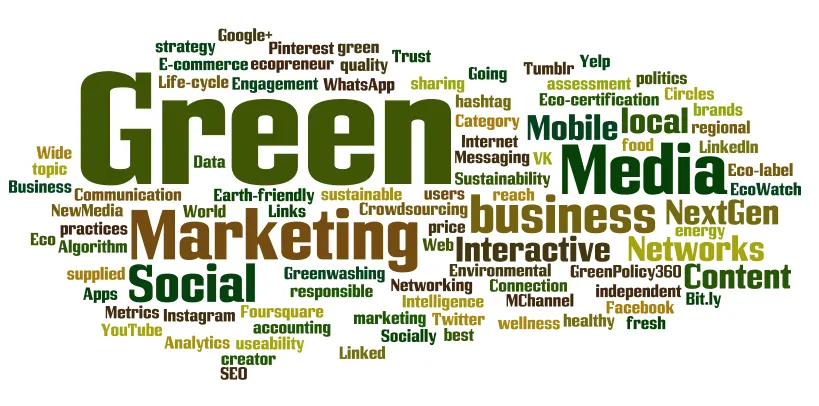Introduction
In today’s world, environmental sustainability has become a significant concern for individuals, organizations, and society as a whole. One approach that aims to address these concerns is green marketing. This blog post will delve into the concept of green marketing, its objectives, strategies, and its role in promoting environmental consciousness. Let’s explore how green marketing contributes to a sustainable future.
What is Green Marketing?
Green marketing refers to the marketing of products and services that are presumed to be environmentally safe and promote sustainable practices [1]. It encompasses a wide range of activities, including product modifications, sustainable packaging, changes to the production process, and eco-friendly advertising. The goal is to create offerings that minimize environmental impact and align with consumers’ increasing preference for sustainability.
Objectives of Green Marketing:
The primary objectives of green marketing are:
- Environmental Conservation: Green marketing aims to contribute to the conservation of the environment by promoting products and services that are eco-friendly and have a reduced carbon footprint.
- Consumer Awareness: It seeks to educate consumers about the environmental benefits of green products, encouraging them to make informed choices and adopt sustainable lifestyles.
- Sustainable Development: Green marketing plays a crucial role in fostering sustainable development by promoting practices that balance economic growth with environmental responsibility.
Strategies for Green Marketing:
Effective green marketing strategies revolve around:
- Product Innovation: Companies focus on developing environmentally friendly products, using sustainable materials, and incorporating energy-efficient technologies.
- Communication and Education: Green marketing involves transparent communication about the environmental attributes of products, emphasizing their benefits and impact.
- Green Supply Chain: It encompasses sourcing raw materials responsibly, minimizing waste throughout the production process, and ensuring ethical and sustainable practices across the supply chain.
- Stakeholder Engagement: Companies engage with stakeholders, including customers, employees, and communities, to foster a shared commitment to sustainability and gather valuable feedback.
Benefits of Green Marketing:
Green marketing offers several benefits for businesses, consumers, and the environment:
- Competitive Advantage: Companies that embrace green marketing gain a competitive edge by appealing to environmentally conscious consumers and differentiating themselves in the market.
- Cost Savings: Implementing sustainable practices can lead to cost savings through reduced energy consumption, waste reduction, and improved efficiency.
- Enhanced Brand Image: Green marketing helps build a positive brand image associated with environmental responsibility and sustainability, attracting environmentally conscious consumers.
- Environmental Impact: By promoting eco-friendly products and sustainable practices, green marketing contributes to reducing carbon emissions, conserving resources, and protecting ecosystems.
Challenges and Limitations of Green Marketing
While green marketing offers significant opportunities, it also faces certain challenges and limitations. One challenge is greenwashing, where companies mislead consumers by making false or exaggerated environmental claims. Maintaining a balance between environmental claims and product performance can be tricky, as businesses must deliver on their promises without compromising functionality. Meeting consumer demands for sustainable products while ensuring profitability can be another challenge. Additionally, navigating complex regulations and certifications related to sustainability can pose difficulties for businesses.
Case Studies in Green Marketing Success
Several companies have successfully embraced green marketing principles, setting examples for others to follow. Patagonia, an outdoor apparel brand, has made sustainability a core value by using recycled materials, reducing waste, and supporting environmental initiatives. Tesla, the electric vehicle manufacturer, has revolutionized the automotive industry by offering zero-emission vehicles and promoting the use of renewable energy. Unilever, a consumer goods company, has prioritized sustainable sourcing, reduced environmental impact, and focused on social responsibility.
Future Trends in Green Marketing
Looking ahead, green marketing is poised to experience further advancements. Integration of technology and data analytics will allow businesses to measure and optimize their environmental impact. The concept of a circular economy, where products are designed for reuse and recycling, will gain traction, minimizing waste and resource depletion. Collaboration and partnerships among businesses, governments, and NGOs will facilitate collective impact and drive sustainability efforts. Furthermore, policy changes and governmental support will play a crucial role in incentivizing and promoting green practices.
Conclusion
Green marketing has emerged as a powerful tool for promoting environmental sustainability and responsible consumption. Through product innovation, transparent communication, and sustainable practices, businesses can cater to the growing demand for environmentally friendly products and contribute to a greener future. By embracing green marketing, companies can align their objectives with the principles of environmental conservation, consumer awareness, and sustainable development.
